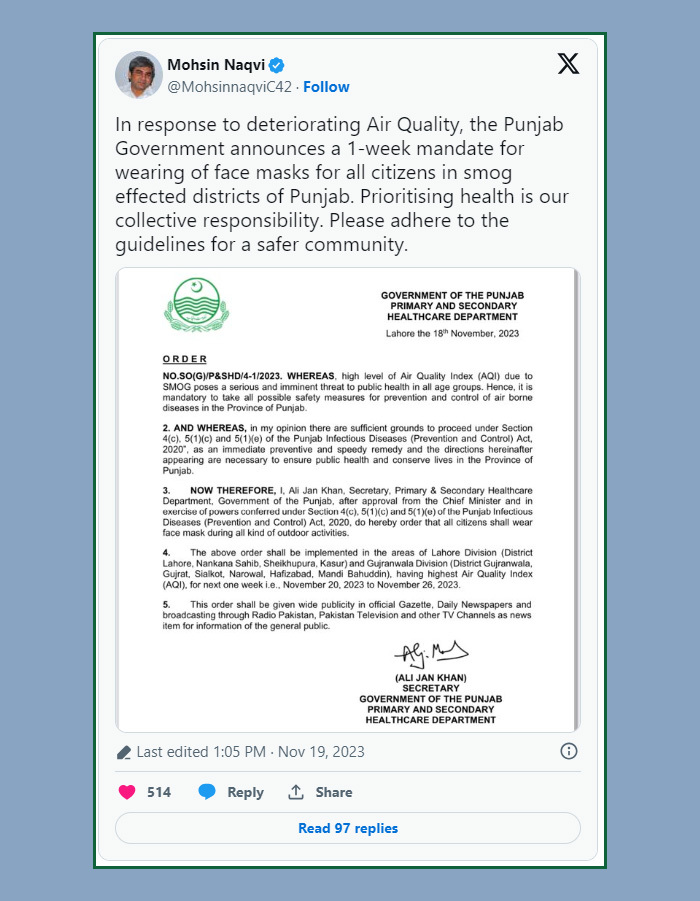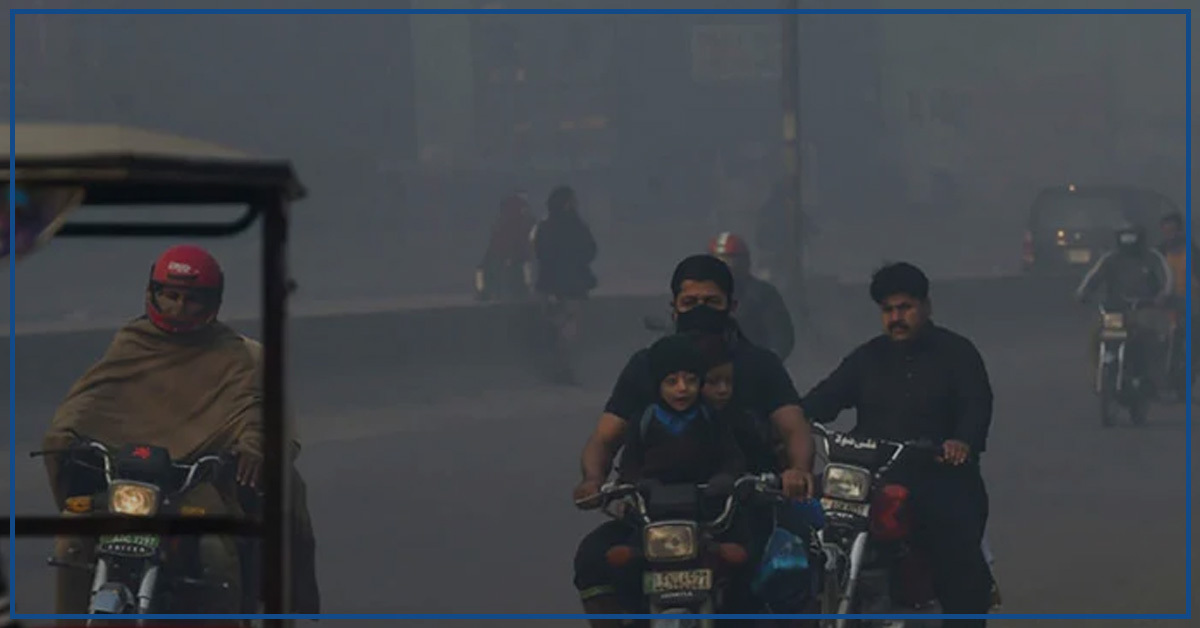In a decisive move, the Punjab government has enforced the compulsory use of face masks for citizens in 10 districts grappling with hazardous smog conditions. Interim Chief Minister Mohsin Naqvi, utilizing the platform X (formerly Twitter), shared a notification from the provincial health department issued a day prior.
The mandate, effective from November 20 to November 26, covers Lahore, Nankana Sahib, Sheikhupura, Kasur, Gujranwala, Gujrat, Narowal, Hafizabad, Sialkot, and Mandi Bahauddin. Naqvi emphasized the collective responsibility to prioritize health, urging citizens to adhere to the guidelines for a safer community.
The notification outlined that the measure aims to prevent and control airborne diseases in the province. The deteriorating air quality, attributed to heavy smog, is deemed a serious and imminent threat to public health across all demographics.
Lahore, grappling with alarming air pollution levels, has earned the dubious distinction of being one of the world’s most polluted cities. Recent data revealed that over 500 individuals fell ill within 24 hours due to toxic smog, necessitating emergency admissions to various local hospitals.

Simultaneously, the Lahore High Court has intervened, issuing directives for stringent measures to counter smog-related challenges. In a bold move, the court dismissed the Punjab environment director-general for failing to ensure adequate preventive measures.
Despite previous efforts, including a smart lockdown, to mitigate air pollution, Lahore recorded an unhealthy Air Quality Index (AQI) of 203 on Sunday. PM2.5, a fine particulate matter known for its adverse health effects, was identified as the primary pollutant.
Efforts to curb smog in Lahore and neighboring districts have shown limited impact on air quality. The consequences extend beyond reduced visibility and increased traffic accidents, posing severe health risks to vulnerable populations.
Individuals with respiratory or cardiovascular conditions, children, the elderly, and pregnant women are particularly at risk. Symptoms of smog exposure include coughing, wheezing, chest pain, eye irritation, headaches, nausea, and fatigue.
Experts strongly advise citizens to adopt precautionary measures, including wearing masks, using air purifiers, and minimizing outdoor activities during peak pollution hours. Seeking medical assistance is recommended for those experiencing any discomfort.
The Punjab government’s bold steps, coupled with ongoing judicial intervention, underscore the urgency of addressing the persistent smog crisis. As the region grapples with the immediate health impacts, proactive measures are crucial to safeguarding the well-being of its inhabitants.





